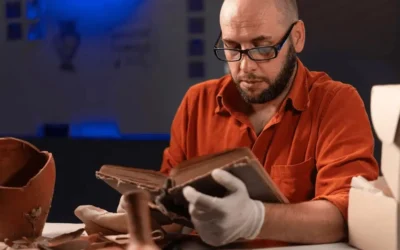Government Archives; Democracy in Action
Margot Note
The public records tradition realizes that government authorities are the creators and keepers of records, which takes place at all levels of government. There is also the assumption of public access and accountability—that records exist to be used by citizens.
Thus, archival records are not simply preserved for theoretical reasons but saved to be accessed by anyone who wishes to view them. The tradition is incorporated in the Constitution, such as requiring Congress to keep a journal.
One of the problematic aspects of tracking public records in the United States is that government archives have been slow to develop; thus, government records are frequently in nongovernmental repositories. For example, the National Archives was established in 1934, the New York City Municipal Archives in 1950, and the Philadelphia City Archives in 1952.
Many state archives have been in existence far longer, although this is not true in all states. County records are frequently in local historical societies where they are treated similarly to manuscripts and where there is a disconnect between the genealogical approach to managing the records and the county government agencies that produce records. In other words, government records are retained for evidence and public trust, but secondary research is often for other reasons.
Another element of government records is that there are three branches to most levels of government. As a result, government archives tend to focus on the executive branch agencies, and less on the legislative and judicial sides. As a result, the official ownership of records of the different branches is often complicated.
The Role of Records Management
The breadth of government records is daunting, as is the quantity of materials with which archivists must cope. As a result, most archives lean heavily on records management to identify records of enduring value. Performing records surveys, creating records retention schedules, and overseeing regular transfers to the archives are common ways to identify government records of enduring value and orchestrate their transfer to the archives. Despite the separation of fields, records management and archives rely on each other throughout the records lifecycle.
Retention schedules are usually established on the series level. This results in a bottom-up approach that can be unwieldy, especially with electronic records that often merge multiple traditional series. Strategies such as functional analysis were developed to inform better choices.
Functional Analysis
Functional analysis prioritizes appraisal and processing based on the importance of an office’s functions within an organization. A model of functions includes three levels: governmental functions (which are broad, such as law and order), agency functions (which functions are broken down further, such as courts administration and corrections), and business functions (which agency functions are more granular, such as parole within corrections).
Functional analysis can occur in stages. A preliminary investigation gathers background information on the organizational role, purpose, and critical factors. Next, an analysis of business activities identifies functions, activities, and transactions. Archivists and records managers can identify recordkeeping requirements, analyze existing systems, and identify strategies. Finally, they can further design and implement a recordkeeping system and perform a post-implementation review.
If information professionals can do this, they can control how the records are created, ensure they link directly to function, and determine retention, handling, and control. However, it is uncommon for archivists to be involved at the systems creation stage in most organizations. The stages are also similar to the stages of records management, but they occur at a higher level and are organization-based, not records-based.
Democracy in Action
Government archives are examples of democracy in action. They allow citizens to have access to records that affect their daily lives. In tandem with records managers, archivists bring order to chaos when preserving government records of enduring value.
Margot Note
Margot Note, archivist, consultant, and Lucidea Press author is a regular blogger and popular webinar presenter for Lucidea, provider of ArchivEra, archival collections management software for today’s challenges and tomorrow’s opportunities. Read more of Margot’s posts here.
Similar Posts
Texas Archive of the Moving Image: Interview with the Digital Archivist
I recently interviewed Grace Muñoz about her work at the Texas Archive of the Moving Image. Her work on improving the discoverability of the multimedia collection is fascinating.
How to Conduct Comprehensive Archival Surveys
Conducting a comprehensive archival survey is critical to successfully managing archival collections.
Remembering History, Moving Forward Together, with ArchivEra
The Catholic Diocese of Arlington’s Director of Archives selected ArchivEra to manage their collections of historical and cultural significance, and strike a balance between security and access.
Unveiling Archival Impact
The transformative power of storytelling depends upon the strategic choices that top archival performers make and the shift from being record-keepers to change agents.




Leave a Comment
Comments are reviewed and must adhere to our comments policy.
0 Comments